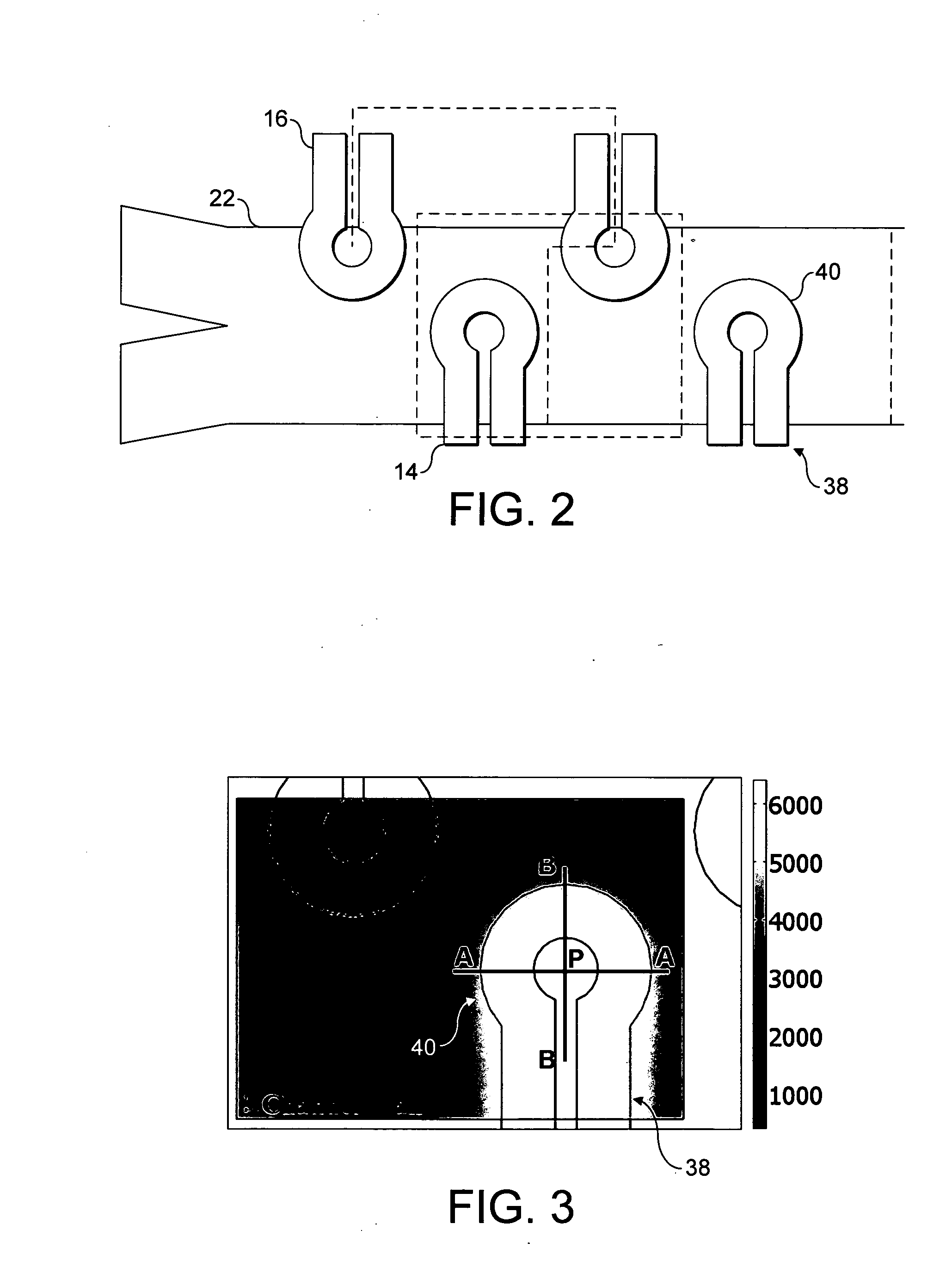Microfluidic device
a microfluidic and device technology, applied in the direction of material analysis, positive displacement liquid engine, optical light guide, etc., can solve the problems of preventing further progress in the rapid analysis device and the structure of these components is often complex
- Summary
- Abstract
- Description
- Claims
- Application Information
AI Technical Summary
Benefits of technology
Problems solved by technology
Method used
Image
Examples
Embodiment Construction
[0112]The micromixer 10, as shown in FIG. 1 comprises a base layer 12 formed from glass having three serpentine conductors 14, 16, 18 embedded therein. A central layer 20 formed from PDMS comprising a straight channel 22 which is located above the serpentine conductors 14, 16, 18 and a upper layer 24 formed from glass having two further serpentine conductors 26, 28 embedded therein, two inlet ports 30, 32 and an outlet port 36.
[0113]An example of the dimensions of the device are shown in FIG. 2 where a top-view of one mixing unit with its boundaries is illustrated. Each mixing unit comprises two adjacent teeth from each conductor. Channel 22 is 150 μm wide and 50 μm deep. Conductors 14, 16 are in the shape of teeth 38 having circular tips 40 and are 35 μm high and 35 μm wide in the section and distances between centres of circular tips 40 of the conductors are 100 μm and 65 μm in x and y directions, respectively. Each row of upper and lower conductors 14, 16 is connected to the powe...
PUM
| Property | Measurement | Unit |
|---|---|---|
| diameter | aaaaa | aaaaa |
| current | aaaaa | aaaaa |
| current | aaaaa | aaaaa |
Abstract
Description
Claims
Application Information
 Login to View More
Login to View More - R&D
- Intellectual Property
- Life Sciences
- Materials
- Tech Scout
- Unparalleled Data Quality
- Higher Quality Content
- 60% Fewer Hallucinations
Browse by: Latest US Patents, China's latest patents, Technical Efficacy Thesaurus, Application Domain, Technology Topic, Popular Technical Reports.
© 2025 PatSnap. All rights reserved.Legal|Privacy policy|Modern Slavery Act Transparency Statement|Sitemap|About US| Contact US: help@patsnap.com



